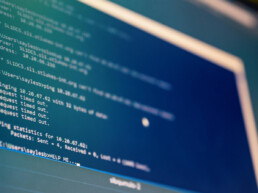Recently, the Ontario Court of Justice has announced a near shut down of court operations because of the Covid19 virus. While this makes medical sense, and reflects the emergency and quarantine laws of our governments, I wonder about the impact of such a restriction to access on the open court principle – that justice must be seen to be done. Just now, the Local Administrative Judge in Oshawa has issued the following directive. No one is allowed in, in person that is, except necessary justice officials and staff. Defence counsel are prohibited from attending the building in person (even the library-for those who don’t know it is a good library with 24/7 access for lawyer members) and phone lines for calls into courtrooms have been set up.
Duty Counsel, who are like public defenders in the U.S. except they only do guilty pleas, provide some summary advice, arrange for adjournments and conduct bail hearings for the indigent, also have to call in. Crown prosecutors, it seems are allowed in person, as are people who come to sign bail. This all makes sense in these difficult times, except that it offends the principal of public accountability which could be accomplished now through allowing a virtual eye into the court, or at least this part seems to be missing. I do not know of any website that allows virtual access during this restriction of public access.
Our courts have held the right of the public to attend court hearings as a fundamental right. There are certain, and rare cases, where the public can be excluded from courtrooms. Historically these were limited to things like extortion trials, where to repeat or publicize the blackmail would frustrate the justice system. Similarly in commercial secret or patent litigation, where confidential business secrets or inventions would get out, the courts naturally would protect the aggrieved parties. When it comes to excluding the media (and by implication the public at large), that cannot be done except in certain rare circumstances and only on notice to the media. The legal test has be described by the Supreme Court of Canada as follows and is known as the Dagenais/Mentuck principle in the case of Toronto Star Newspapers Ltd. v Ontario, 2005 SCC 41:
[26]The Dagenais test was reaffirmed but somewhat reformulated in Mentuck, where the Crown sought a ban on publication of the names and identities of undercover officers and on the investigative techniques they had used. The Court held in that case that discretionary action to limit freedom of expression in relation to judicial proceedings encompasses a broad variety of interests and that a publication ban should only be ordered when:
- (a) such an order is necessary in order to prevent a serious risk to the proper administration of justice because reasonably alternative measures will not prevent the risk; and
- (b) the salutary effects of the publication ban outweigh the deleterious effects on the rights and interests of the parties and the public, including the effects on the right to free expression, the right of the accused to a fair and public trial, and the efficacy of the administration of justice. [para. 32]
[27]Iacobucci J., writing for the Court, noted that the “risk” in the first prong of the analysis must be real, substantial, and well grounded in the evidence: “it is a serious danger sought to be avoided that is required, not a substantial benefit or advantage to the administration of justice sought to be obtained” (para. 34).
I think it is a stretch to say that locking out the media is a risk to the proper administration of justice because of medical reasons, given that an underlying cornerstone of our justice system is that it be open to public view. So sacrosanct is the open court principle that failure to allow the public proper access could void the proceedings.
Regardless, the addition of a camera and microphone to the courtroom is relatively easily accomplished, and linking it to a publicly accessible website would serve to enhance the public’s view of our justice system.
When I was articling, I saw an early experiment with TV in a courtroom. The presiding judge was Patrick LeSage, later Chief Justice of the Superior Court, known for his judicial temperament, even-handedness and humanity. The Crown was Robert Ash, Q.C., someone I worked with as a student on a couple of cases, who was very skilled and bilingual. The camera was at the back and filmed the whole courtroom. There were no zoom-ins permitted. It was respectful, and soon everyone ignored it. Although it worked, it was never pursued again in Ontario other than for a few appeals in the Court of Appeal, in the Truscott reference, or the Carbon Tax Reference, but not in the trial courts. Also the Supreme Court of Canada webcasts all of its appeals, unless publication is restricted for familiar legal reasons outlined above. Even the traditional Law Society of Ontario went to live webcast a few years ago too for its meetings of elected officials known as benchers.
It may be time for some real- time live internet webcasts in the Ontario Court of Justice to preserve the validity of the pandemic process in the courts. And it might make for some entertainment for us bored legal beagles wanting to research the approach of judges we don’t always appear in front of regularly.
Update:
Shortly after writing this blog, the Ontario Court has provided for limited media access upon request.
While this alleviates some of the concerns, the issue remains that public access is not facilitated electronically, and that is something that should be addressed in my view.
Second Update: April 6, 2020:
Late Thursday April 2, 2020, the Superior Court of Justice issued a new practice direction which now provides for a more effective process to access remote court hearings by the public. The court will be providing a list of hearings and court proceedings in advance, and an email where the public can ask to listen in on a hearing, subject to certain rules, eg you cannot record the proceedings or broadcast them without court order.
The Ontario Court of Justice does not seem to have addressed permitting the public to attend court by listening in to a phone hearing. Recently Alyshah Sanmati Hasham of the Toronto Star was told by a court official that she could attend in person at a court proceeding in the Ontario Court of Justice. This seems odd given that the front security are given strict controls as to who to let in, given that lawyers are told to phone certain numbers to access the court and given that it appears no one else is there either. The safest solution is to do what the Superior Court of Justice has done, and give the public limited but fair access to the phone call hearing.
View the The Superior Court practice direction. The relevant part is set out below:
D. Public and media access to criminal proceedings
The Ontario Superior Court of Justice remains committed to the open court principle throughout the COVID-19 pandemic.
Any member of the media or the public who wishes to hear/observe a remote proceeding may email their request to the local courthouse staff in advance of the hearing. The person requesting access should provide their name, the hearing they wish to hear/observe, and their contact information.
Every effort will be made to provide the requestor with information on how they may hear/observe the proceeding.
Section 136 of the Courts of Justice Act restricts the recording by a member of the public of a court hearing.
Certain proceedings are closed to the media and public by legislation or court order.
The Court will seek to post on a public website matters scheduled to be heard by the Court, so that the media can choose to hear or observe a proceeding.


